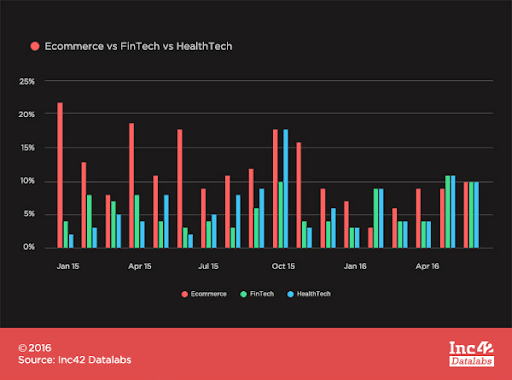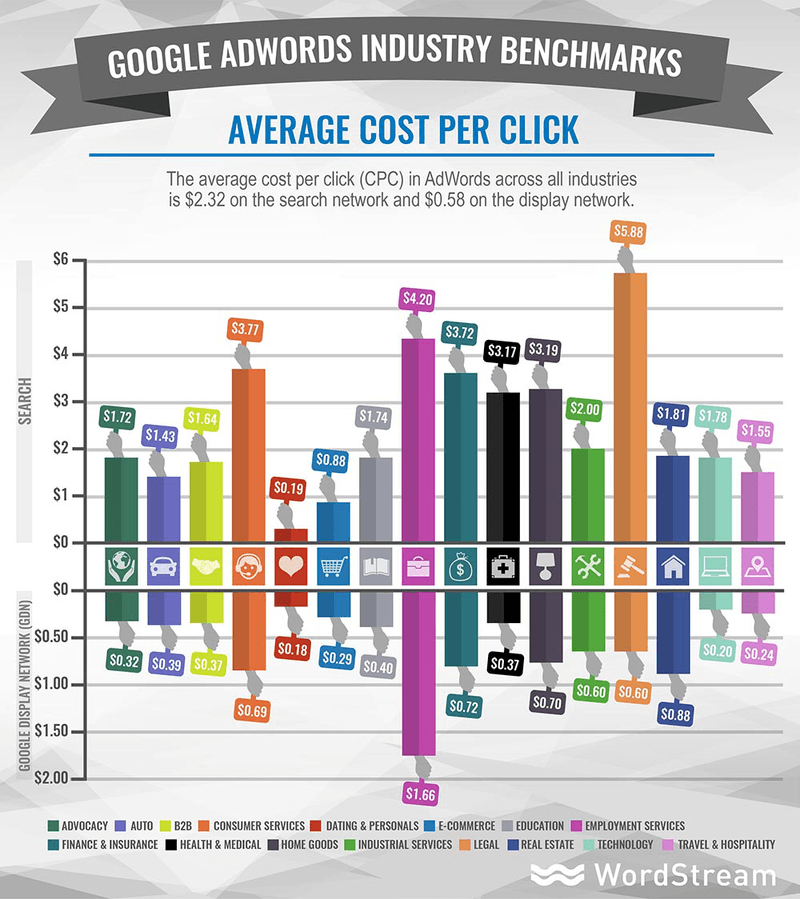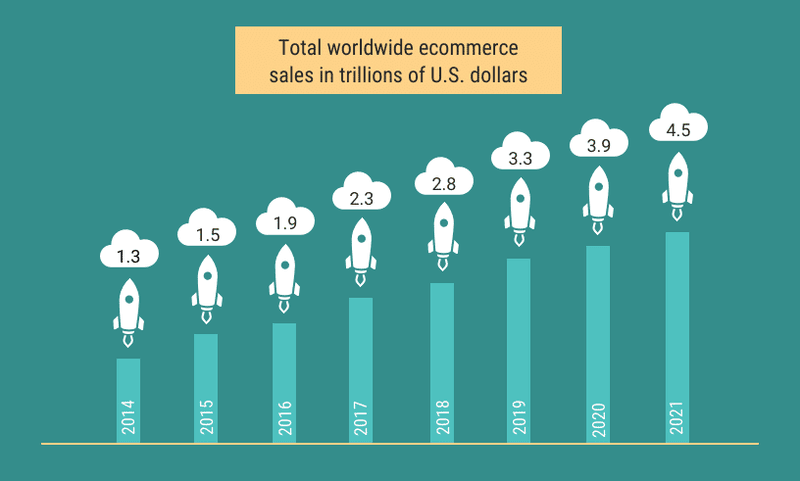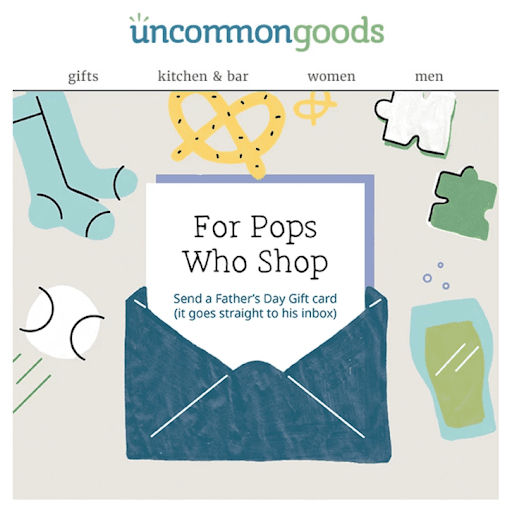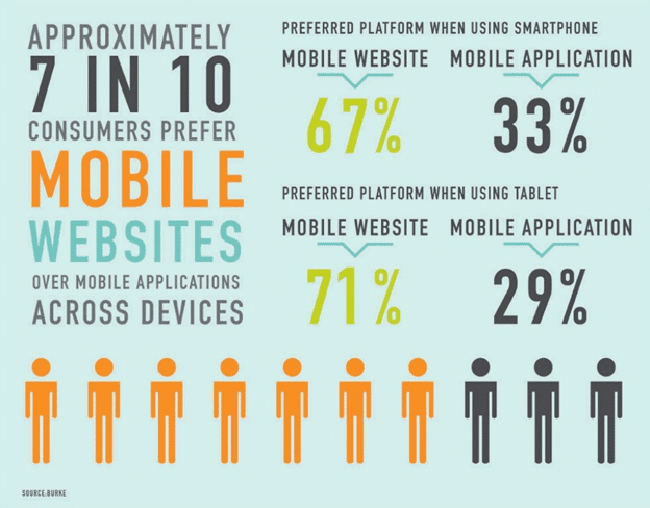The 2023 eCommerce Marketing Bubble
E-Commerce Bubble Explosion Factors and How E-commerce Marketing Should Look.
Updated November 20, 2023.

Ecommerce is known as the purchase and sale of goods or services through an electronic medium. As technological advancements have appeared at a rapid pace in the last thirty years, with the internet becoming an integral part of our daily lives, eCommerce has also shot up to the forefront of the commercial world. This has led to an increase in the number of companies advertising their products and services through an e-commerce medium, making the current state of affairs in eCommerce marketing still somewhat in its infancy.
Is eCommerce undergoing a bubble? And is it going to burst soon? We break that down in this post.
E-Commerce Bubble Explosion: The Factors
Impatient Investors
There has been an e-commerce bubble, which has declined in recent years. One of the main reasons for this is that investors in e-commerce firms are becoming increasingly impatient with the companies, expecting quick profits.
This has resulted in e-commerce businesses seeing a decrease in revenue between January 2015 and April 2016 after strong increases in the years before, the bubble had burst. If e-commerce is to grow to the heights that it had previously, investors will need to exercise more patience with their businesses. Growing within a volatile market like e-commerce will not happen overnight and dedication is required to reach the desired results.
The initial bubble of the e-commerce market was caused by the massive increase in deals and deal value, which made investors more optimistic about the market as a whole. Despite this, with e-commerce falling behind FinTech and HealthTech, investors have been less confident, which has contributed to the bursting of the bubble.
Discount Wars
Another contributing factor to the bursting of the e-commerce marketing bubble has been the common “discount wars” between different e-commerce retailers, trying to gain competitive advantages, which has driven down prices and profits.
It Is Now More Difficult To Get Funding
It should also be noted that investments in e-commerce were easier to come by in 2015, since then investors have started analyzing businesses on different metrics, being more stingy with their funding.
Online Advertising Costs
A big contributing factor to the demise of more e-commerce firms and the general downturn in the marketing bubble can be attributed to the increasing costs associated with marketing e-commerce services online.
Even smaller firms spend massive amounts on online marketing, with the average spend being between $100,000 and $120,000 per year. As displayed by the below graph, e-commerce as a sector is one of the more expensive ones for PPC marketing.
The Current State of E-Commerce Marketing
As has been previously stated, e-commerce is enjoying a marketing boom as it stands, with 40% of internet users across the world stating that they have used the internet on a tablet, desktop, mobile phone, and other devices to purchase products or services.
Furthermore, global e-commerce sales are expected to reach $3.46 Trillion by the end of the year, with this figure expected to rise to $6.54 Trillion in 2022. E-commerce provides a powerful tool for businesses that can utilize it correctly, making them more visible to potential customers.
There are numerous methods of eCommerce marketing, with the most popular ones being social media marketing, content marketing, influencer marketing, affiliate marketing, and Search Engine Optimization. Despite the current rise of e-commerce and the success of e-commerce marketing, there are still issues that need to be addressed. One of these issues is abandoned baskets and a lack of effort amongst certain companies to try and encourage the customer to come back and complete the transaction.
This is a very widespread issue, as 87% of marketers don’t make an effort to send any post-abandonment communications, even though 72% of e-commerce shopping carts are abandoned.
If marketers were to automatically contact customers when they have abandoned their baskets, the company can expect to convert previously lost leads at 20%, causing a massive increase in revenue. Ecommerce firms should have a massive interest in limiting the number of high-intent users that abandon their baskets.
One of the primary reasons for this is that online advertising has become increasingly costly, this means that each lead that isn’t closed will represent a cost to the company, and limiting these ensures that as little investment is wasted as possible.
Furthermore, contact should be made with previous customers to upsell them on different products/services and to further nurture them into your brand culture.
The Importance of Having a Marketing Strategy in E-Commerce
Having a marketing strategy in your e-commerce business is critical, there are a number of reasons for this. Firstly, most e-commerce firms do not have a marketing strategy at all, some may have a digital marketing plan, but this is still very different from a strategy.
The increased competition in the e-commerce space and the costs of online advertising will begin to force e-commerce companies to build their marketing strategy around their brand.
This brand will be built by telling stories and connecting with the customer on an emotional and sustainable level, which will create customer loyalty and can give rise to referral marketing, which will help the company to grow.
Ensuring that your e-commerce business has a defined marketing plan also brings value due to the fact that it allows the business to take a more structured and strategic stance towards building brand awareness, which will drive more sales.
Need help with your eCommerce marketing strategy? Talk to one of our top-notch eCommerce experts.
How E-Commerce Marketing Should Look
There are a number of methods to utilize to ensure that your e-commerce marketing gets the most conversions possible.
Firstly you must make sure that you are utilizing social media to its maximum extent. Instagram has over 500 Million active daily users, which is a large potential market to tap into. So long as you make good content, incorporate hashtags well and post your content at advantageous times, you will create a group of followers who have a genuine interest in your products or services.
Also, if you consider Facebook, you also have the capability to set up a store on their website. This is useful, due to the high volume of users on Facebook.
Also, your Facebook store can be integrated into your Shopify store, to avoid the need for carrying multiple inventories. Making sure that you effectively measure your social media campaign ROI is also a key component in your success. Additionally, eCommerce marketers need to make effective use of their email marketing lists. If you simply capture a few email addresses, you are going to see minimal results. The key to ensuring efficiency with your email marketing is to send emails regularly, which adds potential value to your customers.
Ensuring that your website is optimized for mobile use is a great way of increasing your conversion rates. ReadyCloud has stated that 44% of e-commerce traffic occurred through mobile traffic and 7 out of 10 of customers prefer mobile websites to mobile apps on their devices.
Furthermore, Statista has shown that by 2022, more than half of online purchases will be made through mobile devices.
Finally, offering rewards for your most loyal customers is a great way to keep your e-commerce presence positive. The reason for this is that according to Stitch Labs, repeat custom accounts for 22% of total revenue for retailers and they have an average spend 15% higher than that of the average customer over the course of a year.
How you would choose to reward your customers is completely up to you, however, loyalty programs and loyalty discounts are common.
There are also a number of different marketing tips that you can use to increase the success rate of your eCommerce marketing campaign.

